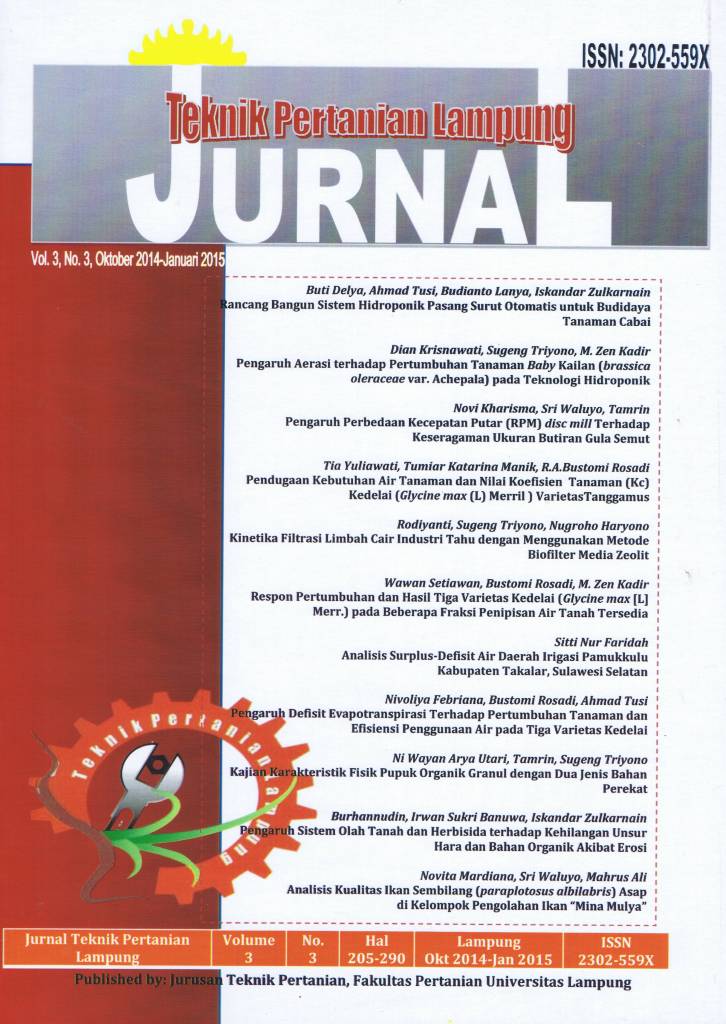THE INFLUENCE OF DEFICIT EVAPOTRANSPIRATION TOWARD PLANTS GROWTH AND WATER USE EFFICIENCY OF THREE SOYBEAN VARIETIES (Glycine max (L.) Merril)
DOI:
https://doi.org/10.23960/jtep-l.v3i3.%25pAbstract
The objective of this research is to find out the influence of evapotranspiration deficit toward plants growth andwater use efficiency of three soybean varieties (Glycine max. (L) Merr.). This research was conducted in the
greenhouse, integrated laboratory of Agriculture Faculty, Lampung University on November, 2013 to January,
2014. This research used a complity randomized design consisting two treatment factors with three times
repetition. The fisrt factor was evapotranspiration deficit (E) consisting of E1 (1.0), E2 (0.8), and E3 (0.6), and
E4 (0.4). The second factorwas variety (V) consisting of Tanggamus (V1), Kaba (V2), andWillis (V3). The result
of research showedthat evapotranspiration deficit and varietywas significantly differentwhereas the interaction
was not significantly different at all growth components, production andwater use efficiency .The highest result
productionwasWiliis (V3) and Kaba (V2) on E1 (1.0) 12.33 gr/pot. The highest value ofwater use efficiencywas
Willis (V3).
Downloads
Published
2015-01-30
Issue
Section
Articles
License
- Authors who publish with this journal agree to the following terms:
- Authors retain copyright and grant the journal right of first publication with the work simultaneously licensed under a Creative Commons Attribution-ShareAlike 4.0 International Lice that allows others to share the work with an acknowledgement of the work's authorship and initial publication in this journal.
- Authors are able to enter into separate, additional contractual arrangements for the non-exclusive distribution of the journal's published version of the work (e.g., post it to an institutional repository or publish it in a book), with an acknowledgement of its initial publication in this journal.
- Authors are permitted and encouraged to post their work online (e.g., in institutional repositories or on their website) prior to and during the submission process, as it can lead to productive exchanges, as well as earlier and greater citation of published work (See The Effect of Open Access).
Jurnal Teknik Pertanian Lampung

JTEPL is licensed under a Creative Commons Attribution-ShareAlike 4.0 International License.

